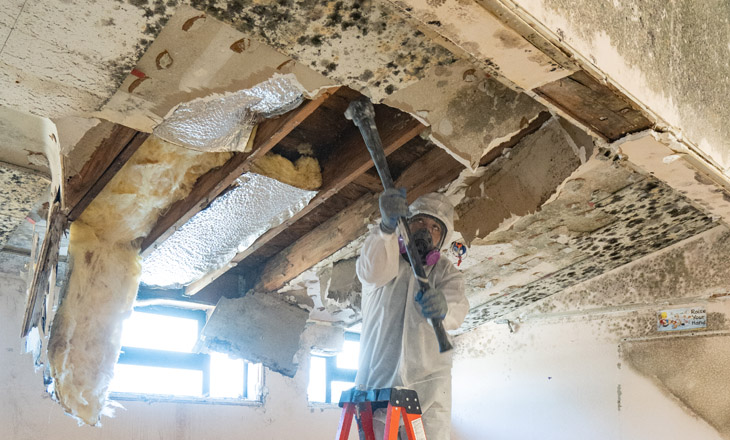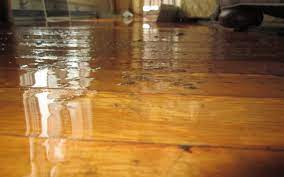Mold is a problem that many home and business owners face since it can cause serious health problems, destroy your property, and cost you hefty expenses if not addressed quickly. Take the necessary precautions to guarantee your safety and the safety of others if airborne mold is present in your home or workplace.
At PuroClean of Ft. Lauderdale South, we are experts in mold and water damage remediation. We are on call 24/7 and provide our services in Fort Lauderdale, Miami, Pembroke Pines, Cooper City, Hollywood, Miramar, and surrounding areas. If you are facing property damage issues such as these, call us now at (754) 732-8383!
To assist you in making wise decisions about how to effectively handle this sort of issue, this article will provide you a comprehensive review of all you need to know about it. We’ll include important topics such as why it’s dangerous, how to detect its presence, and effective options for removing it from your environment.
Table of Contents
Definition
Mold is a fungi that grows in damp or wet environments. Although it can be found both inside and outside, it prefers wet environments with little to no ventilation. It releases spores into the air to reproduce which can be inhaled easily. Airborne mold refers to these tiny particles that are suspended in the air, typically invisible to the naked eye.
Different types have unique features in terms of color, form, and texture depending on their habitat and species. Common colors include black, white, green, and yellow, but they can also be brown or purple. The most common shapes are circles and spots; however, some may appear filamentous or cottony looking.
The texture ranges from fuzzy to slimy depending on how much moisture there is for them to feed off of. Identifying mold should not be taken lightly due to its harmful effects on human health if left untreated.
While mild cases of mold exposure may result in allergic symptoms like coughing, sneezing, or watery eyes, more severe occurrences may result in respiratory conditions like asthma episodes or difficulty breathing.
To avoid any problems with health and safety, understanding its definition is key for proper prevention and treatment. This knowledge allows homeowners to identify signs of infestation early on before it becomes an even bigger problem.

Types Of Airborne Mold
Mold can take on a variety of forms and colors. It can cause a variety of health problems when it spreads inside your home or place of employment. The most prevalent varieties in the air include black mold, mildew spores, fungal spores, and other airborne fungi. Because it generates mycotoxins that are deadly to human health if inhaled, black mold is the most dangerous type.
- Volatile organic compounds (VOCs), which are released by toxic molds and which may cause adverse effects such nausea, headaches, and respiratory problems, are toxic substances. Mildew spores are far less dangerous than black and toxic molds but they still pose an inhalation risk when present in large quantities.
- Fungi spores are also found naturally in the environment but can become more prominent during high humidity seasons; these spores may contain allergens that can trigger asthma attacks or allergic reactions if inhaled by sensitive individuals.
- Understanding the various types of molds is essential for proper remediation and prevention measures. Proper ventilation practices should be followed to reduce indoor air pollutants caused by all types of airborne fungi. Additionally, a regular cleaning with damp cloths or brushes will help limit their growth within a given space.
Health Effects Of Exposure
Exposure to mold can have a variety of long-term health effects, from minor irritations to more significant health problems. It is especially concerning for individuals with respiratory conditions or weakened immune systems.
- People who are exposed to it may have a wide range of respiratory health consequences, such as coughing, wheezing, asthma episodes, tightness in the chest, shortness of breath, and breathing difficulties.
- Some people may furthermore experience allergic symptoms such sneezing, congestion, and watery eyes. In some circumstances, continued exposure might cause more serious issues including pneumonia or lung infections.
- Aside from the potential physical risks associated with mold exposure, there are psychological implications as well. Individuals who experienced long exposure to high levels of spores often report feeling anxious, depressed and overwhelmed by negative thoughts. They may find themselves struggling with memory problems or concentrating on tasks at hand.

Prevention Tips
Mold prevention is an essential step in protecting the health of indoor environments. It’s crucial to take preventative measures and enhance both the indoor and outdoor air quality to prevent mold from spreading. Here are a few tips:
- First, ensure proper ventilation throughout your living space by checking all windows and doors for drafts that allow moisture into the area. Use exhaust fans or dehumidifiers where needed to control humidity levels. It’s also helpful to inspect any areas with standing water such as around pipes, bathtubs, toilets, and sinks for possible leaks which can lead to water damage and high indoor humidity.
- Second, clean regularly using natural cleaning agents like vinegar or baking soda instead of harsh chemical cleaners which can be toxic if inhaled. This will help reduce dust buildup that may contain spores from growing indoors.
- Lastly, check your HVAC system annually for signs of excess moisture caused by condensation or other issues that could cause poor air quality within your home environment.
Testing And Remediation
Now that you understand the basics of preventing flying spores, it’s important to know how to test for and remediate any existing mold. This involves collecting air samples to identify areas where spores are present and measure their concentrations. This method is often used together with visual inspection methods such as infrared thermography or moisture mapping.
The advantage of these methods is they can detect hidden sources of water intrusion and help determine whether the source needs to be addressed before further investigation into the presence of mold can be conducted. Mold removal methods vary depending on the severity and extent of contamination, but typically involve isolating affected materials, ventilating contaminated areas, thoroughly cleaning surfaces, removing porous items (like carpets), and properly disposing of waste.
If needed, professional mold testing services may also be required if there is widespread damage or potential health risks associated with a particular outbreak. It’s essential to follow all safety protocols when dealing with mold in the air; this includes wearing protective clothing, using specialized equipment like HEPA vacuums and respirators, sealing off work areas from other parts of the home or building, minimizing spread through good containment practices, following disposal guidelines closely and ensuring proper ventilation during cleanup activities.
Conclusion
Mold is a serious issue that should never be taken lightly. It can lead to a several health issues, especially in people with weak immune systems or pre-existing medical conditions. It is important to address the problem immediately once it is detected to prevent further contamination and health risks.
It is best to call a reputable remediation company like PuroClean of Ft. Lauderdale South if your house or workplace has a mold problem. With the right equipment and knowledge, our team of specialists can solve any mold-related problems.
Don’t wait until it’s too late to take action against airborne mold. Make the necessary preparations to protect your family, friends, and employees’ well-being. Contact PuroClean of Ft. Lauderdale South today to schedule an appointment and get started on removing mold from your property.
👉 Click here to schedule your Free Inspection
📞 Call 24/7 | 🗣️ Hablamos Español, Português, Deutsch & English (754) 732-8383
🛠️ PuroClean of Ft. Lauderdale South — Where Restoration Meets Compassion
Social Media🌐:
X | Facebook | Instagram | Google Maps | LinkedIn




 PuroClean of Ft. Lauderdale South
PuroClean of Ft. Lauderdale South